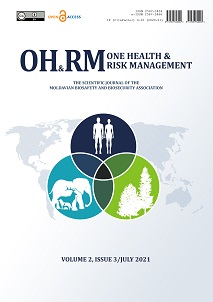Abstract
Introduction. Potato (Solanum tuberosum L.) is susceptible to infestation with an associated complex of different species of parasitic and saprophytic nematodes, bacteria, fungi, and arthropods, which diminish the quality of the product.
Material and methods. 10 varieties of potatoes were investigated (Agata, Albastriu-mov, Bella rosa, Concorde, Desiree, Irga, Iagodca, Roko, Romano, Sprinter), cultivated on the territory of the Republic of Moldova. The extraction of nematodes and mites was performed using the Baermann funnels, modified by Nesterov.
Results. Multiannual researches on the degree of potato infestation have shown that tubers are preferred by various arthropods (Acaridae), Agriothes spp. (Elateridae), Gryllotalpa gryllotalpa, (Grillotalpidae) and Sciaridae spp . (Sciaridae), which form different interactions with the parasitic nematodes of tubers (Ditylenchus destructor, D. dipsaci).
Conclusions. Solanum tuberosum infested by parasitic nematodes D. destructor in association with saprophytic nematodes and dry rot are colonized by nematophag ous (mites – 80%) and phytophagous arthropods (wireworms – 40%; mole cricket – 50%; flies – 40%). Among the researched arthropods, Rhizoglyphus echinopus were more frequently found, which together with other species actively consume the primary and secondary parasitic nematodes, their mortality constituting up to 90%. In the traumatized by some arthropods potatoes, with the soil, secondary parasitic nematodes, also penetrate, carrying bacterial and fungal infections, subsequently stimulating the total rot of potato tubers.
|
 Views: 491|
|
Views: 491|
|
